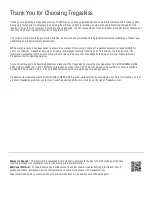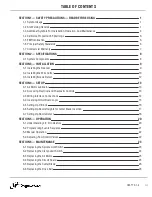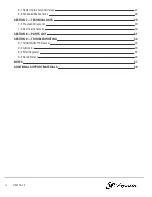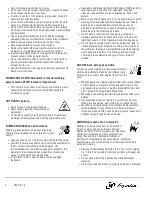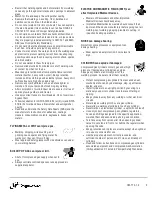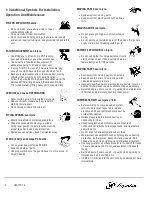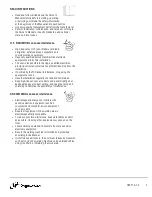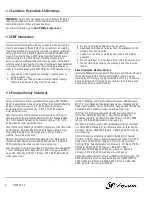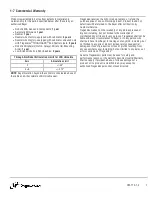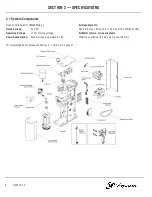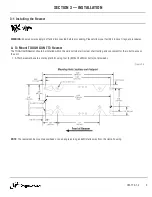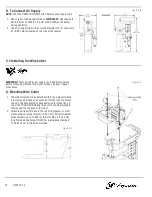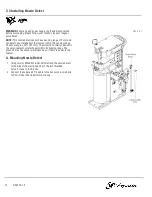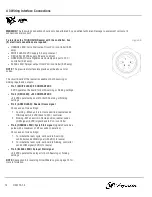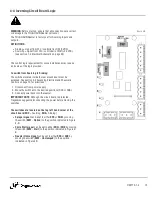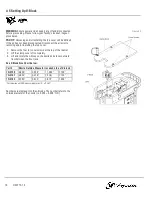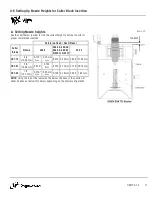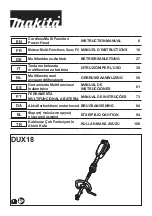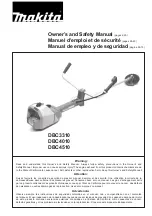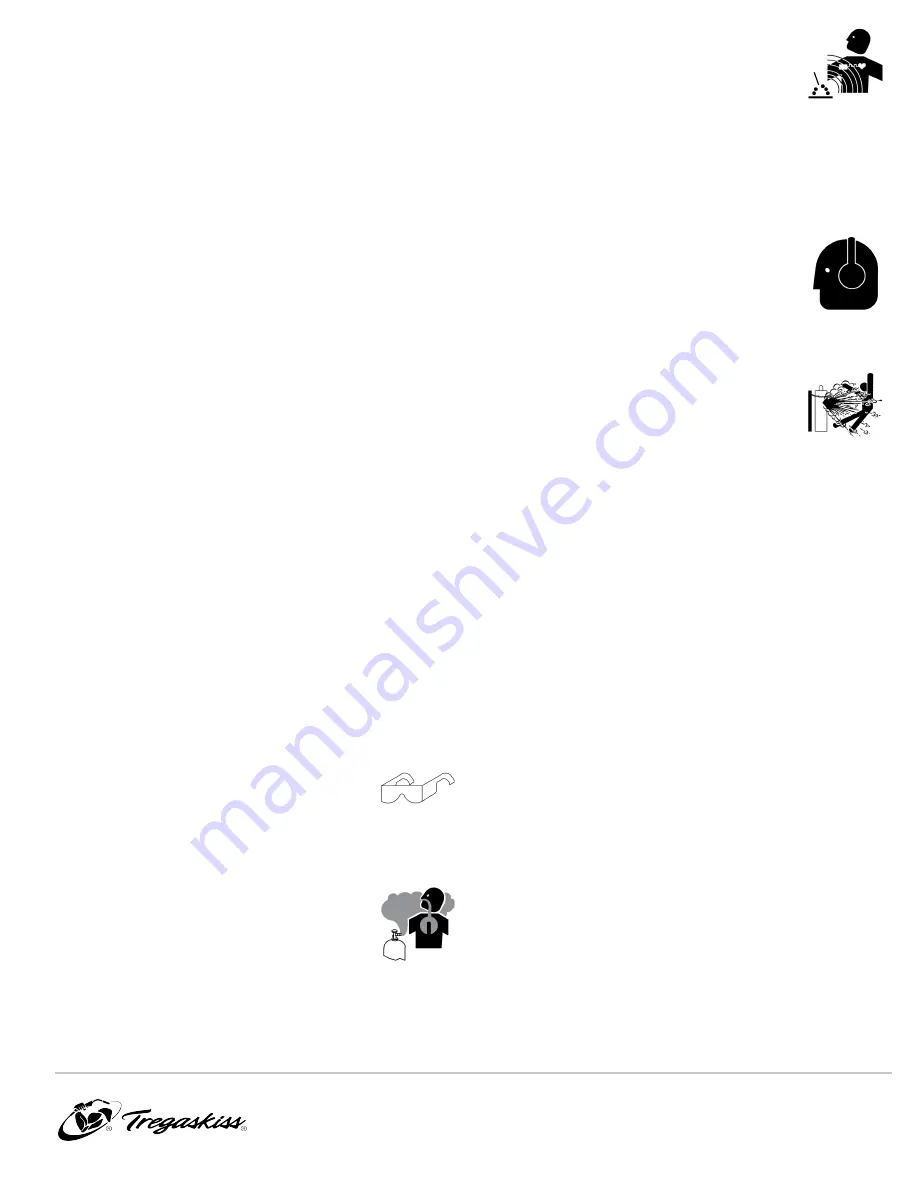
l
Be alert that welding sparks and hot materials from welding
can easily go through small cracks and openings to adjacent
areas.
l
Watch for fire, and keep a fire extinguisher nearby.
l
Be aware that welding on a ceiling, floor, bulkhead, or
partition can cause fire on the hidden side.
l
Do not cut or weld on tire rims or wheels. Tires can explode
if heated. Repaired rims and wheels can fail. See OSHA 29
CFR 1910.177 listed in Principal Safety Standards.
l
Do not weld on containers that have held combustibles, or
on closed containers such as tanks, drums, or pipes unless
they are properly prepared according to AWS F4.1 and AWS
A6.0 (see Principal Safety Standards).
l
Do not weld where the atmosphere can contain flammable
dust, has, or liquid vapors (such as gasoline).
l
Connect work cable to the work as close to the welding area
as practical to prevent welding current from traveling long,
possibly unknown paths and causing electric shock, sparks,
and fire hazards.
l
Do not use welder to thaw frozen pipes.
l
Remove stick electrode from holder or cut off welding wire
at contact tip when not in use.
l
Wear body protection made from durable, flame-resistant
material (leather, heavy cotton, wool). Body protection
includes oil-free clothing such as leather gloves, heavy shirt,
cuffless trousers, high shoes, and a cap.
l
Remove any combustibles, such as a butane lighter or
matches, from your person before doing any welding.
l
After completion of work, inspect area to ensure it is free of
sparks, glowing embers, and flames.
l
Use only correct fuses or circuit breakers. Do not oversize or
bypass them.
l
Follow requirements in OSHA 1910.252 (a) (2) (iv) and NFPA
51B for hot work and have a fire watcher and extinguisher
nearby.
l
Read and understand the Safety Data Sheets (SDSs) and the
manufacturer's instructions for adhesives, coatings,
cleaners, consumables, coolants, degreasers, fluxes, and
metals.
FLYING METAL or DIRT can injure eyes.
l
Welding, chipping, wire brushing, and
grinding cause sparks and flying metal. As
welds cool, they can throw off slag.
l
Wear approved safety glasses with side shields even under
your welding helmet.
BUILDUP OF GAS can injure or kill.
l
Shut off compressed gas supply when not in
use.
l
Always ventilate confined spaces or use approved air-
supplied respirator.
ELECTRIC AND MAGNETIC FIELDS (EMF) can
affect Implanted Medical Devices.
l
Wearers of Pacemakers and other Implanted
Medical Devices should keep away.
l
Implanted Medical Device wearers should consult their
doctor and the device manufacturer before going near arc
welding, spot welding, gouging, plasma arc cutting, or
induction heating operations.
NOISE can damage hearing.
Noise from some processes or equipment can
damage hearing.
l
Wear approved ear protection if noise level is
high.
CYLINDERS can explode if damaged.
Compressed gas cylinders contain gas under high
pressure. If damaged, a cylinder can explode.
Since gas cylinders are normally part of the
welding process, be sure to treat them carefully.
l
Protect compressed gas cylinders from excessive heat,
mechanical shocks, physical damage, slag, open flames,
sparks, and arcs.
l
Install cylinders in an upright position by securing to a
stationary support or cylinder rack to prevent falling or
tipping.
l
Keep cylinders away from any welding or other electrical
circuits.
l
Never drape a welding torch over a gas cylinder.
l
Never allow a welding electrode to touch any cylinder.
l
Never weld on a pressurized cylinder – explosion will result.
l
Use only correct compressed gas cylinders, regulators,
hoses, and fittings designed for the specific application;
maintain them and associated parts in good condition.
l
Turn face away from valve outlet when opening cylinder
valve. Do not stand in front of or behind the regulator when
opening the valve.
l
Keep protective cap in place over valve except when cylinder
is in use or connected for use.
l
Use the proper equipment, correct procedures, and
sufficient number of persons to lift, move, and transport
cylinders.
l
Read and follow instructions on compressed gas cylinders,
associated equipment, and Compressed Gas Association
(CGA) publication P-1 listed in Principal Safety Standards.
OM-TT3-1.4
3


